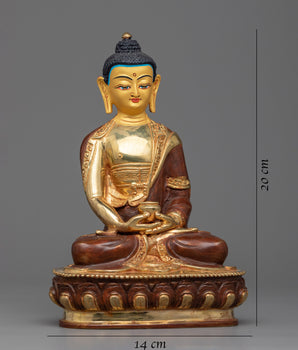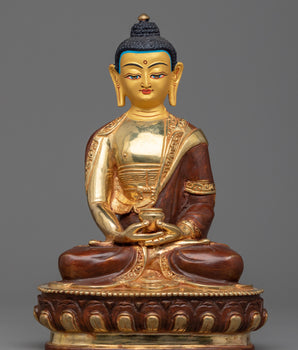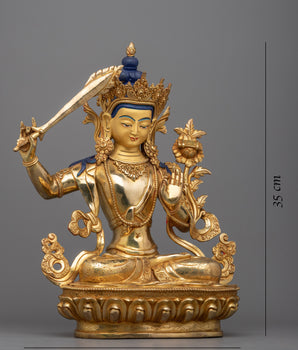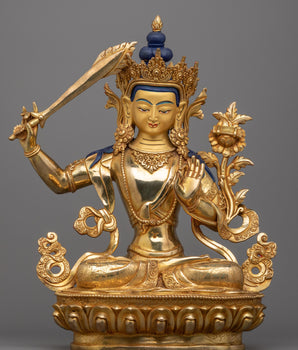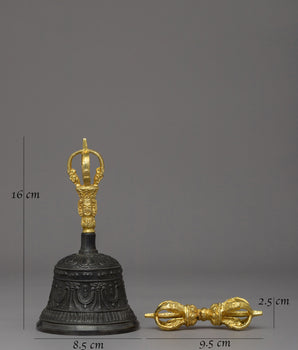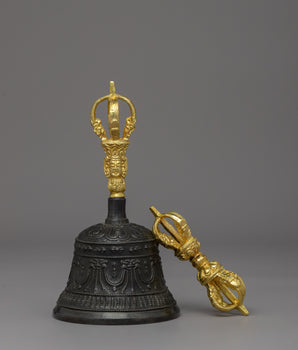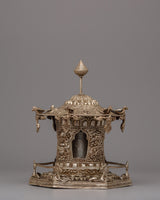
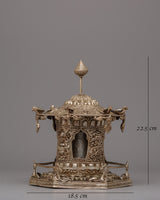
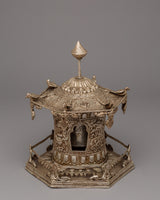
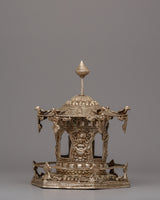
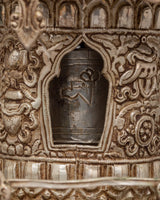
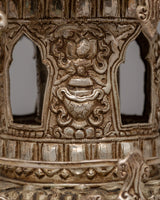
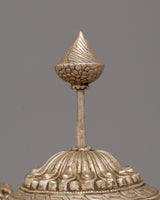
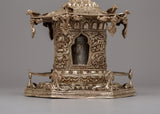
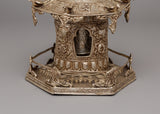
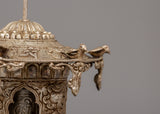
Silver Plated Prayer Wheel | Buddhist Meditation Tool for Prayers and Blessings

100% AUTHENTIC

HANDMADE

FREE SHIPPING
Silver-Plated Tibetan Prayer Wheel
--------------------------------------------------------
Size: 22.5 cm(Height) x 18.5 cm(Width)
Weight: 0.50 kg
Materials: Copper Body, Silver Plated
--------------------------------------------------------
About our Prayer Wheel
This Silver-Plated Tibetan Prayer Wheel is an exquisite combination of traditional workmanship and spiritual intent. This prayer wheel, made of copper and plated with electro-silver, displays detailed carvings of Tibetan patterns expressing creativity and devotion. Standing 22.5 cm tall, 18.5 cm wide, and weighing only 0.50 kg, it is a tiny yet exquisite artwork suited for spiritual rituals or as a decorative addition to any holy area. The middle drum, viewable via a small opening, is believed to contain sacred writings like the "Om Mani Padme Hum" mantra, representing blessings and compassion.
The complex design has a beautifully carved frame, a delicately formed spire on top, and highly engraved bird designs along the rim, lending a distinct touch of traditional Tibetan creativity. Prayer wheels are utilized in Buddhist ceremonies to release prayers and blessings with each turn, promoting awareness and happiness. This prayer wheel is ideal for practitioners searching for a meaningful ritual tool, collectors of cultural relics, or those looking for a thoughtful present. It symbolizes beauty, spirituality, and cultural value.
Introduction to Prayer Wheel
A prayer wheel is cylindrical on a spindle used in Tibetan Buddhism. It is typically inscribed with the mantra "Om Mani Padme Hum" and rotated by hand as a form of spiritual practice and to accumulate merit. Spinning the wheel is believed to have the same spiritual benefits as verbally reciting the mantra. The use of prayer wheels is widespread in Tibetan Buddhism and has spread to other cultures.
How does Buddhist Prayer Wheel benefit us?
The benefits associated with rotating the wheel are numerous. It promotes knowledge, compassion, and bodhicitta in the practitioner and improves siddhis (spiritual powers such as clairvoyance, precognition, etc.). The practitioner can repeat the mantra as often as possible while the wheel is rolling, maintaining a calm, meditative attitude. A Tibetan Buddhist tradition holds that after a practice session, one should dedicate any acquired merits to the benefit of all sentient beings. Then three times Om Ah Hum. This is usually among Tibetans after finishing any Buddhist practice, including the prayer wheel exercise.
Why choose Evamratna?
To give your space a peaceful, powerful, and attractive feel, we are introducing Buddhism-inspired home décor items to enliven your space with zen vibes in the form of decoration, an art form, or inspiration.















